
How DO you exercise on a budget?
There are so many pressures to spend your hard-earned money on, well, ummmm ….. basically everything! Including exercise. If you tune into the world around you or if you’re easily hooked into comparing yourself to others, you’ll probably believe that you HAVE to pay for a gym membership, you HAVE to buy fancy equipment to get fit, and that you HAVE to have the latest super-tech clothes if you intend to work up a sweat (which kind of goes along with exercise!).
Well I’m telling you that all these have-to’s are simply not true. Sure, some of those fancy clothes or equipment can enhance your exercise, but for aeons humans have coped quite well with little or no special exercise equipment. I mean, exercise is basically improving your strength and aerobic health through activity that puts a load on your body. It doesn’t HAVE to cost anything, and crying poor is never a reason to stay on the sofa.
Back in my day …..
Ask your grandparents or great grandparents (if they’re still around) and they’ll tell you what it was like back in their day. I bet they’d say no one needed any gyms or fancy schmancy pants in the olden days: exercise consisted of a hard day’s work out on the farm fixing fences, collecting and chopping wood for the kitchen fire, walking to the shop and doing the laundry in a boiler!
you what it was like back in their day. I bet they’d say no one needed any gyms or fancy schmancy pants in the olden days: exercise consisted of a hard day’s work out on the farm fixing fences, collecting and chopping wood for the kitchen fire, walking to the shop and doing the laundry in a boiler!
You don’t need a big budget!
Yes, times have changed and it’s a different world we live in, but there are some things that have stayed the same. To exercise on a budget, you simply get back to the basics – focus on your daily dose of physical activity instead of the frills-and-all approach that can suck you in. Get yourself a decent pair of shoes, pull on some comfy clothes and a hat. Slap on some sunscreen. Grab a bottle of water. And you’re all good to go walking, one of the best and most accessible types of exercise we have.
Why is walking ideal? Oh my goodness, let me count the ways!
- You can set your own pace
- It’s convenient – slip on your shoes and get out the door no matter where
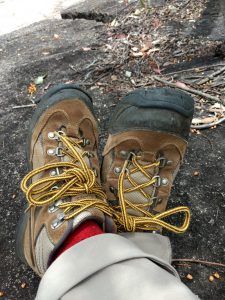 you live or work or travel
you live or work or travel - You can do it alone or in a group
- You’ve probably already got everything you need to go walking
- If you don’t have everything, you still don’t HAVE to spend a lot to get started
- No special equipment needed
- It’s free in general – to tell you the truth, there are a few places I’ve been to that charge a small fee such as a day entry fee to some National Parks or car parking fees in busy tourist or urban spaces, but that’s the exception not the rule. Walking is one of the cheapest ways to exercise on a budget.
Walking ….. “BORING!”
Walking is boring, you say? Well, anything’s boring if you repeatedly do the same thing day after day, in the same place, and in the same way.
Never be bored again!
Here are some ideas to vary up your workout so you’ll never be bored again, even if you need to exercise on a budget (and that’s most of us)!
- Mix it up – walk in different places
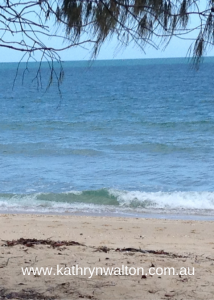
- Choose different length walks – some days go long, and other days go short
- Go solo, or meet up with a buddy
- Join a walking group
- Have a go at Park Run
- Change up which direction you go on your usual route
- Challenge yourself to an uphill climb
- Relax with a downhill walk
- See the city sights on an urban walk
- Climb those stairs – repeatedly!
- Go exploring on a water walk – river, dam, ocean
- Treat yourself to a bushwalk – check out National Parks, State Forests, reserves

- Wander along the beach, feel the sand between your toes
- Walk with a purpose: walk to work, school, a friend’s place, bus or train station, shops
- Swap your usual routine and enjoy the sights at a different time of day
- Grab a map and compass and give orienteering a go
- Use a navigation app or device to pre-plan your walk – you can even be really creative by designing a funky picture that overlays the streets and then follow that on your walk
- Pace the paddock or local park
- Walk with a backpack for added load, or take some light hand weights
- Walking meetings are all the rage!
- Have a walking break at lunch time or after work to wind down and de-stress
- Leave your car a few kilometres from work or the train / bus station and walk the rest of the way
- Earn as you walk – deliver newspapers or pamphlets house-to-house
- Go window shopping
- Take your kids for a walk after school while everyone chats about their day
Walking can be your go-to exercise too!
Walking has always been my go-to exercise because I can do it almost anywhere, any time, with little equipment, no expense, and all the benefits of feeling great and knowing I’m giving my future health an awesome boost! And you can too! Start with any of the ideas above and let me know how you go, or share your other ideas with me on how to exercise on a budget.
Discovering mountain biking as life’s ultimate parallel universe in her middle age, Kathryn Walton shares information and reflections in ‘Daisy Spoke’ that inform, inspire and empower women to a healthy and active lifestyle.


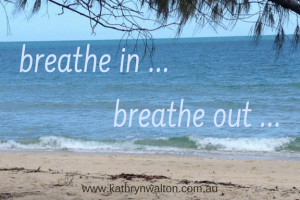
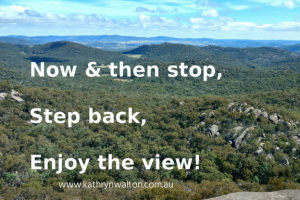
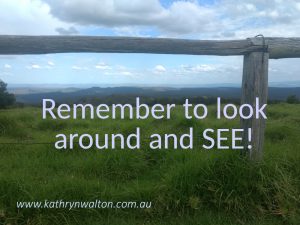
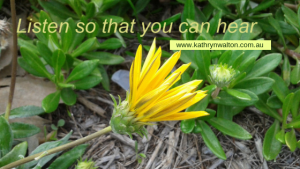


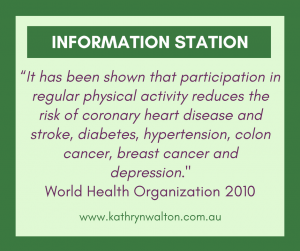
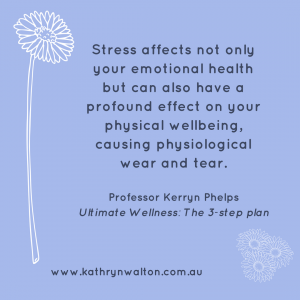
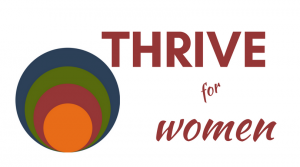
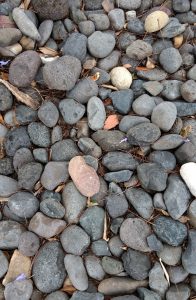 So first of all, make sure you GET THE BIG ROCKS IN YOUR LIFE FIRST. They are your priorities so take steps to make sure you allow plenty of time and energy for them. Next put in your medium-sized rocks. Your small rocks go in after that and will be able to settle into the spaces between the bigger rocks. You can be more flexible with how they fit into your life. Next comes the sand. These things will be able to flow into the spaces that you have left. If there isn’t time and energy for them right now, that doesn’t matter. When things settle, they’ll have a place in your bucket once again.
So first of all, make sure you GET THE BIG ROCKS IN YOUR LIFE FIRST. They are your priorities so take steps to make sure you allow plenty of time and energy for them. Next put in your medium-sized rocks. Your small rocks go in after that and will be able to settle into the spaces between the bigger rocks. You can be more flexible with how they fit into your life. Next comes the sand. These things will be able to flow into the spaces that you have left. If there isn’t time and energy for them right now, that doesn’t matter. When things settle, they’ll have a place in your bucket once again. 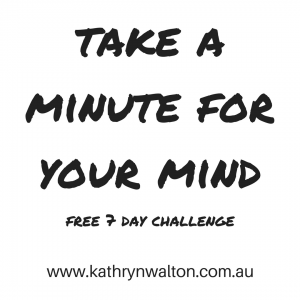
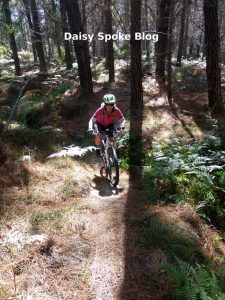 was missing it.
was missing it. 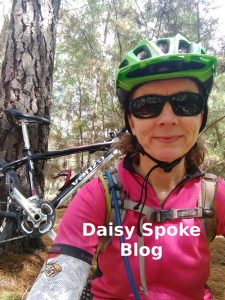 I’ve been practising and teaching this technique for a lot of years, and yet still I sometimes forget to do it when the moment arises. The thing is that on Sunday morning I DID NOTICE those fearful thoughts bouncing round my head. And guess what?
I’ve been practising and teaching this technique for a lot of years, and yet still I sometimes forget to do it when the moment arises. The thing is that on Sunday morning I DID NOTICE those fearful thoughts bouncing round my head. And guess what? 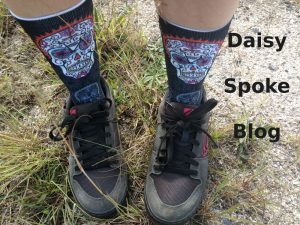 of short hills engaging my quads in an exertion that a couple of years ago would have been painful (if not impossible)! I pedalled in a higher gear than normal and found it easier than expected.
of short hills engaging my quads in an exertion that a couple of years ago would have been painful (if not impossible)! I pedalled in a higher gear than normal and found it easier than expected. 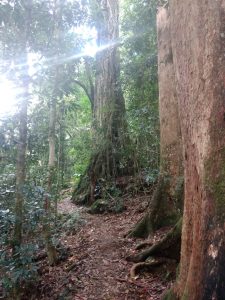 My Year of Adventure in fact began on New Year’s Eve as I set off on a week long road trip with my family to Melbourne and back home again traversing half the eastern side of Australia. With one daughter now settled in Victoria, I refocused my attention on developing new online programs and resources for women. I was thrilled to take my “February Adventure” to Hahndorf in South Australia to participate in and present at the Thriving Women 2018 conference. My “March Adventure” was closer to home with weekends and day trips to several magnificent National Parks, immersing myself in one of my great loves – bushwalking.
My Year of Adventure in fact began on New Year’s Eve as I set off on a week long road trip with my family to Melbourne and back home again traversing half the eastern side of Australia. With one daughter now settled in Victoria, I refocused my attention on developing new online programs and resources for women. I was thrilled to take my “February Adventure” to Hahndorf in South Australia to participate in and present at the Thriving Women 2018 conference. My “March Adventure” was closer to home with weekends and day trips to several magnificent National Parks, immersing myself in one of my great loves – bushwalking.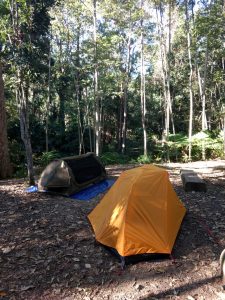 a lot of “what if’s” and identified as a fearful and hesitant adventurer rather than a brave one. My April Adventure has brought up a number of ‘firsts’ for me – I’ve left half my family behind, I’m travelling with only one companion (my younger daughter) through some fairly remote parts of Australia, I’m camping in a tent by myself, I’m having to step up and make decisions I’ve not been responsible for previously, and I’m operating a business far from home and frequently without mobile reception or internet connection.
a lot of “what if’s” and identified as a fearful and hesitant adventurer rather than a brave one. My April Adventure has brought up a number of ‘firsts’ for me – I’ve left half my family behind, I’m travelling with only one companion (my younger daughter) through some fairly remote parts of Australia, I’m camping in a tent by myself, I’m having to step up and make decisions I’ve not been responsible for previously, and I’m operating a business far from home and frequently without mobile reception or internet connection.

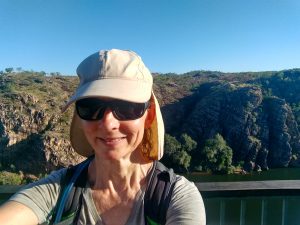
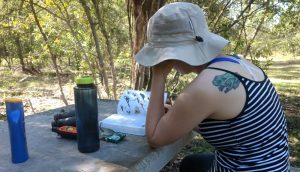
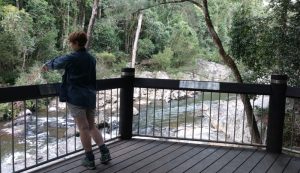

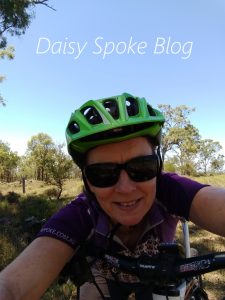 Daily exercise and general physical activity are crucial elements of feeling good. Just as some people might need to diligently take medication every day, I need to exercise every day. Exercise is nature’s way of stimulating the hormones which aid concentration, problem-solving, sleep, digestion, and mood. This daily dose of exercise rebalances our body’s systems resulting in wide-ranging benefits that no single medication can provide. The research is absolutely clear that regular medium to high intensity exercise can have a profound effect on health AND happiness.
Daily exercise and general physical activity are crucial elements of feeling good. Just as some people might need to diligently take medication every day, I need to exercise every day. Exercise is nature’s way of stimulating the hormones which aid concentration, problem-solving, sleep, digestion, and mood. This daily dose of exercise rebalances our body’s systems resulting in wide-ranging benefits that no single medication can provide. The research is absolutely clear that regular medium to high intensity exercise can have a profound effect on health AND happiness.
 Minds are such complex things! They wield a lot of power over our emotions and our actions (including sleep). But unless you notice what’s going on in your mind, and choose how much power to give it, your thoughts, assumptions and beliefs will control you instead of the other way around. The habit of being hooked by thoughts or strongly attached to them is limiting and anxiety-provoking. The key here is to begin by simply noticing what is happening in your mind, and by doing this with curiosity and without judgement. The power is in the noticing. You’ll collect all sorts of interesting bits of information about how your mind works, what thinking patterns it gets locked into, what beliefs and assumptions are behind it all, and how all of this impacts your physiology, your behaviours and your emotions. One of my favourite sayings is “Don’t believe everything you think!” because we can learn to stand back, notice the thought and choose whether to believe it, or not.
Minds are such complex things! They wield a lot of power over our emotions and our actions (including sleep). But unless you notice what’s going on in your mind, and choose how much power to give it, your thoughts, assumptions and beliefs will control you instead of the other way around. The habit of being hooked by thoughts or strongly attached to them is limiting and anxiety-provoking. The key here is to begin by simply noticing what is happening in your mind, and by doing this with curiosity and without judgement. The power is in the noticing. You’ll collect all sorts of interesting bits of information about how your mind works, what thinking patterns it gets locked into, what beliefs and assumptions are behind it all, and how all of this impacts your physiology, your behaviours and your emotions. One of my favourite sayings is “Don’t believe everything you think!” because we can learn to stand back, notice the thought and choose whether to believe it, or not.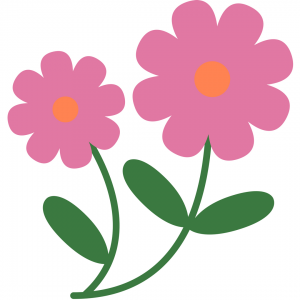 Click here to read my last blog post
Click here to read my last blog post 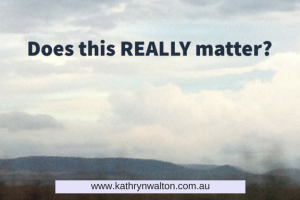
 example of mine was
example of mine was 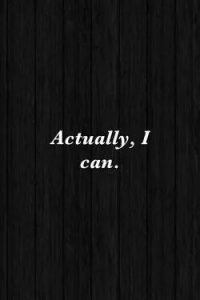
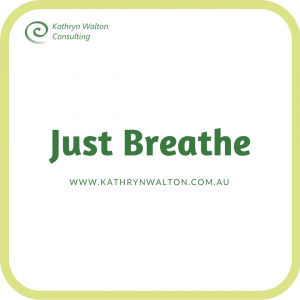 You can collect them from songs, poems, books and social media in addition to listening to your own inner wisdom. Write them on sticky notes, in a journal or diary, print out visual reminders to stick around your home or workplace, or even use them as screen savers and wallpapers on your electronic devices. Some examples include “Just do it”, “One drop raises the ocean”, “Keep it simple”, “Just breathe”, “Stand tall”.
You can collect them from songs, poems, books and social media in addition to listening to your own inner wisdom. Write them on sticky notes, in a journal or diary, print out visual reminders to stick around your home or workplace, or even use them as screen savers and wallpapers on your electronic devices. Some examples include “Just do it”, “One drop raises the ocean”, “Keep it simple”, “Just breathe”, “Stand tall”.
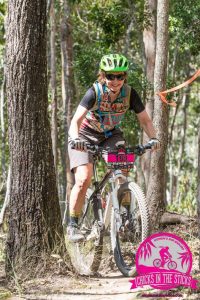 lying on the beach, your stresses trickling away into the sand beneath you) or to help you progress towards a goal (eg visualise yourself speaking in front of an audience, feeling confident, upright posture, smiling, relaxed). When I’m feeling nervous about riding my bike on a particular section of track, I stop for a few moments and picture myself riding it the way I want it to go, as if I’m watching a short video of myself successfully negotiating that section. It truly is a powerful mind-based strategy and one you can use in every area of your life.
lying on the beach, your stresses trickling away into the sand beneath you) or to help you progress towards a goal (eg visualise yourself speaking in front of an audience, feeling confident, upright posture, smiling, relaxed). When I’m feeling nervous about riding my bike on a particular section of track, I stop for a few moments and picture myself riding it the way I want it to go, as if I’m watching a short video of myself successfully negotiating that section. It truly is a powerful mind-based strategy and one you can use in every area of your life.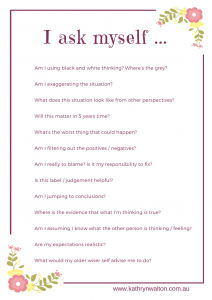 the mix. And to help you keep your strategies in play, I’ve created a free printable for you. “I ask myself …” is a beautiful keepsake of the helpful questions listed above. You can
the mix. And to help you keep your strategies in play, I’ve created a free printable for you. “I ask myself …” is a beautiful keepsake of the helpful questions listed above. You can 
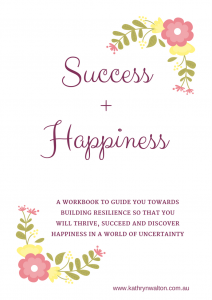 I have an EXCITING OFFER for you!
I have an EXCITING OFFER for you!